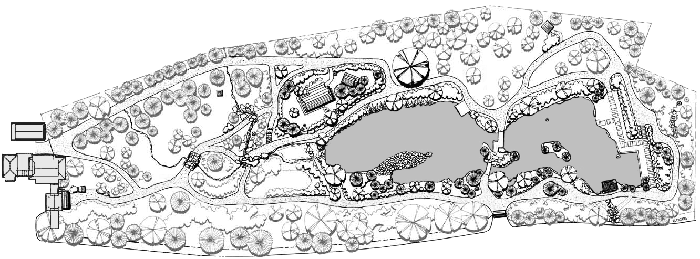The Seattle Japanese Garden
The Seattle Japanese Garden is located at the south end of the Washington Park Arboretum at 1075 Lake Washington Blvd E, just north of the playfields, where parking is free.
Hours vary depending on the time of year.
Sadly, the Garden is closed from December through February.
For more information about Location, Hours and Events,
see SeattleJapaneseGarden.org
Entrance Fees: Adults: $6 / Students, Seniors & Disabled: $4
/ small children are free.
Seattle Japanese Garden through the Seasons
Spring
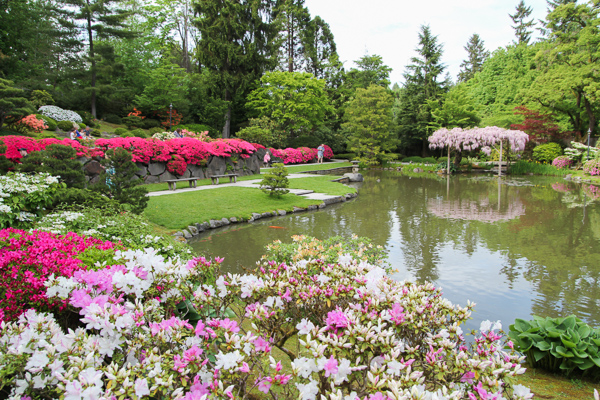
In spring, enjoy the brilliance of the floral display.
Summer
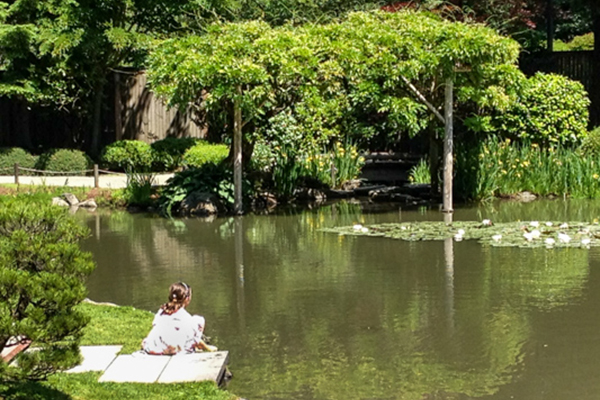
In Summer, look for the many different shades of green.
All Photos
by Peggy Garber
(Select a season below to see more views.)
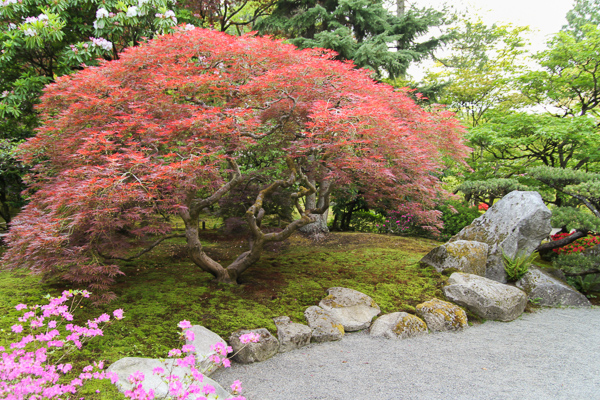
Spring - 1 of 20: In spring, the new lacey leaves of the maple near the entrance glow pinkish red, then gradually deepen through summer into the fall.
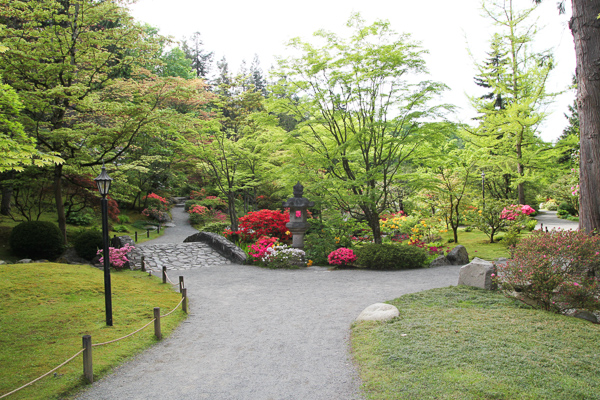
Spring - 2 of 20: The path leading from the Entrance Gate offers an early choice at the Todo-Gata Lantern: left over the arching stone bridge and into the upland hills or right along a more level path.
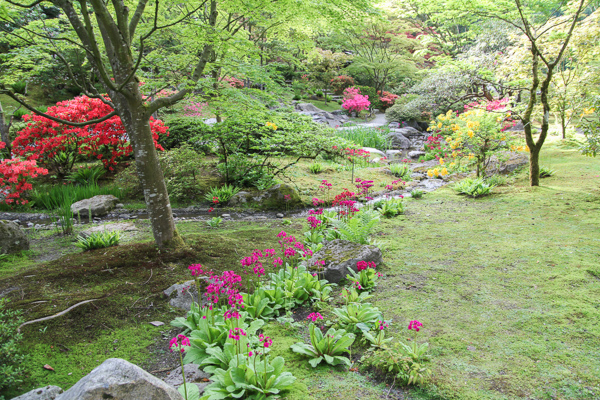
Spring - 3 of 20: From the right hand path, a view of the stream meandering gently downhill.
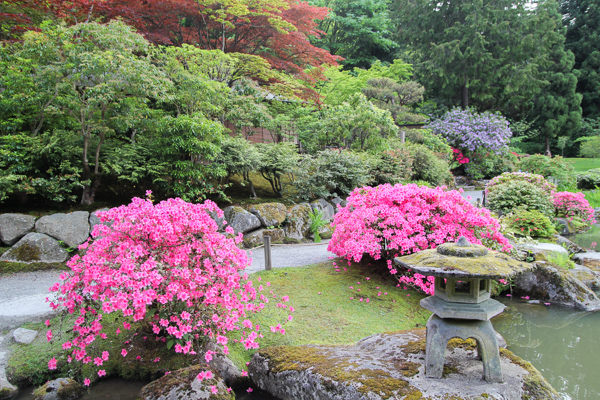
Spring - 4 of 20: The Yukimi-Doro snow viewing Lantern perches on a mossy rock in front of the Tea House hedge.
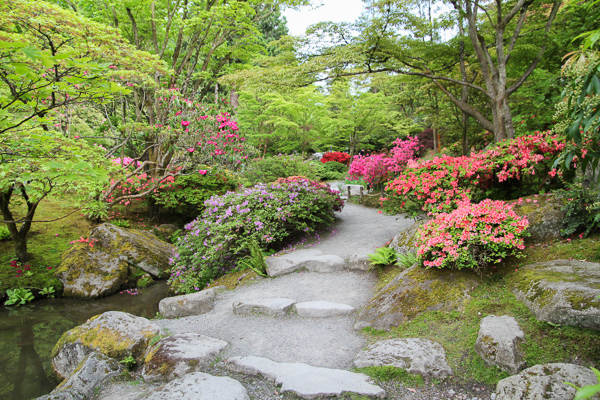
Spring - 5 of 20: Looking left from the snow lantern, a stepped path leads back toward the stream and upland hills from beside the Tea House.

Spring - 6 of 20: Looking right from the snow lantern reveals an expansive view of the pond.

Spring - 7 of 20: Across the pond, the Misaki-Gata cape lantern marks the point of the Amanohashidate rocky peninsula.
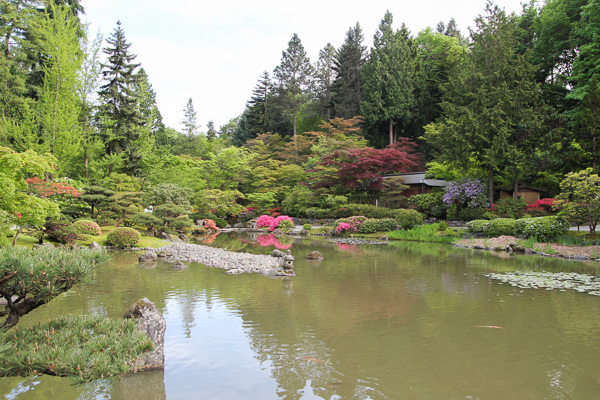
Spring - 8 of 20: The Amanohashidate rocky peninsula with its Misaki-Gata cape lantern and the Tea House on the opposite shore.
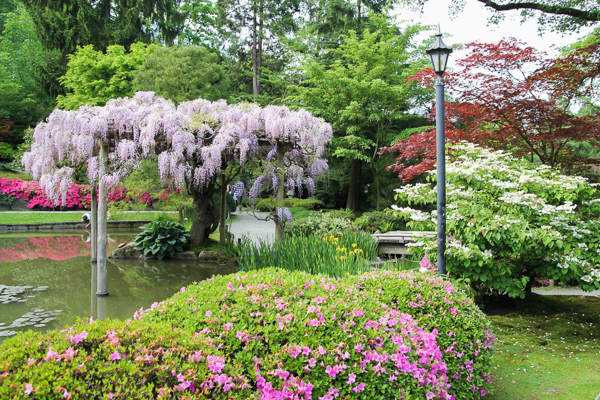
Spring - 9 of 20: The whisteria trellis and azaleas in full bloom.
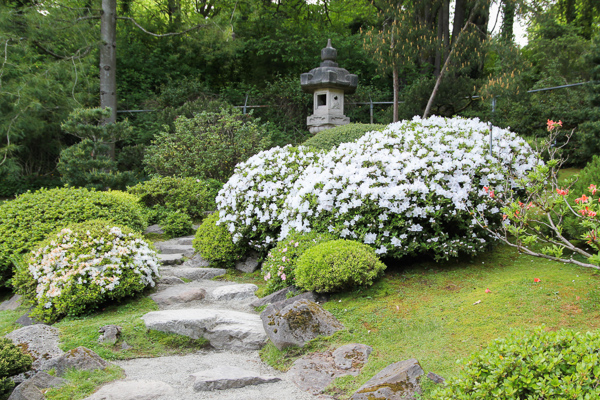
Spring - 10 of 20: The Taihei-Gata friendship lantern, a gift from Kobe, Seattle's Sister City, sits high on the north hill ...
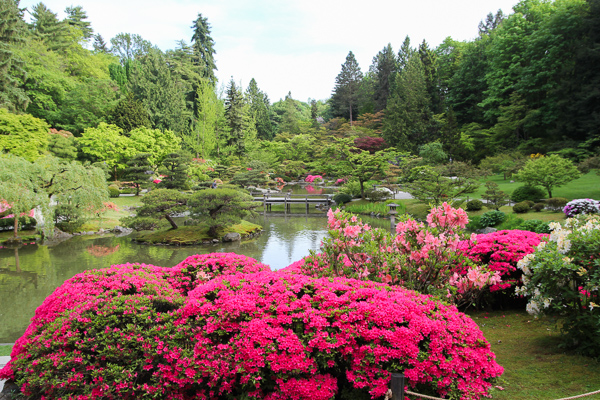
Spring - 11 of 20: ... providing a panoramic view of the pond, its surrounding garden and the borrowed scenery of the Arboretum forest beyond.

Spring - 12 of 20: Colorful azaleas festoon rock walls behind the pond harbor and the closer banks of the pond, framing this view toward the wisteria trellis.

Spring - 13 of 20: The wisteria trellis, azaleas and the weeping willow reflect in the ripples of the pond.
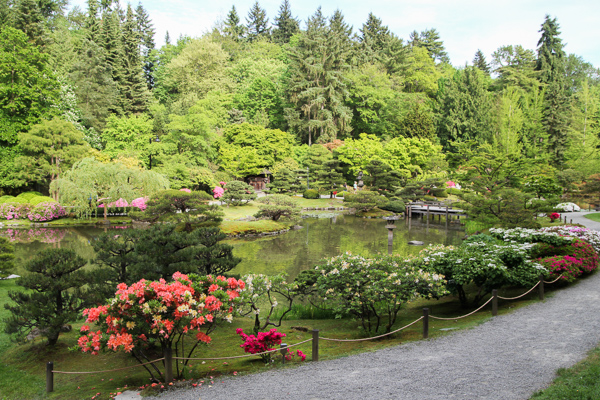
Spring - 14 of 20: Azaleas and pines line the path along the west side of the pond.
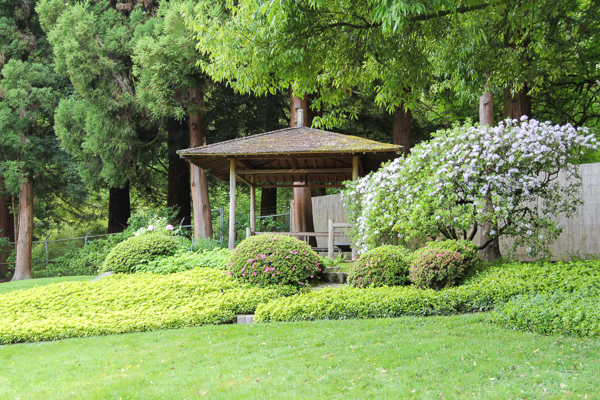
Spring - 15 of 20: Sit for a few quiet moments of contemplation in the Azumaya at the back of the meadow.

Spring - 16 of 20: The Shoseian "Whispering Pine" Tea House shelters in a grove maple trees across the pond from the Amanohashidate rocky penninsula.

Spring - 17 of 20: Stone steps complete the path across the stream above the pond ...
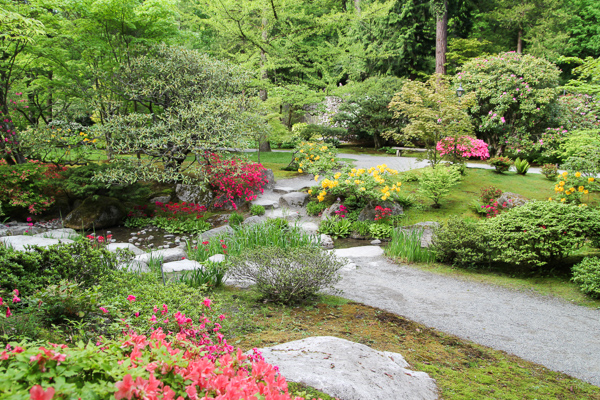
Spring - 18 of 20: ... and join the path from the Tea House.
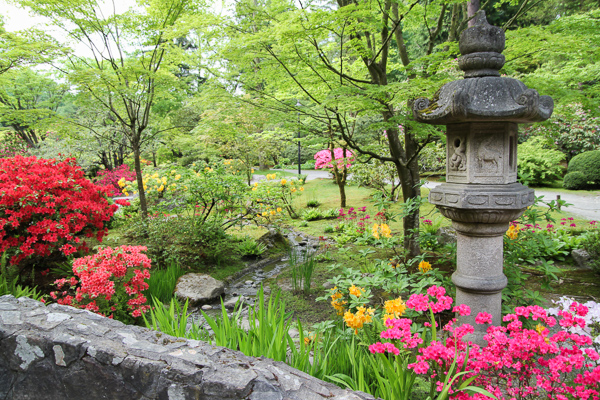
Spring - 19 of 20: View the Todo-Gata Kasug-style lantern and stream from the arching stone bridge.
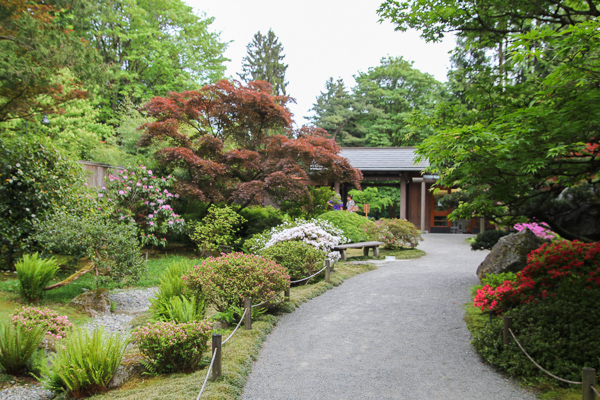
Spring - 20 of 20: Return on the path leading back to the Entrance Gate.
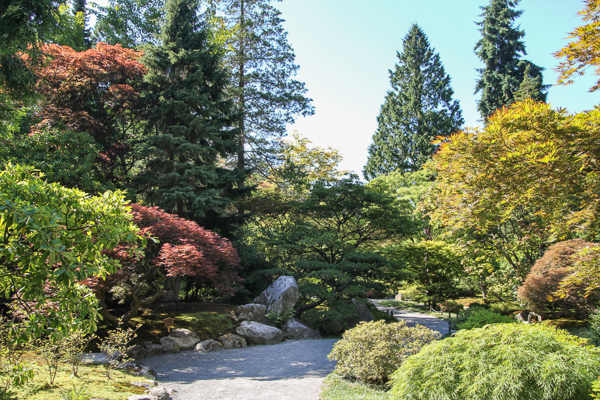
Summer - 1 of 19: Summer is the time to notice the variety of the shades of green as you meander from the entrance gate passed the Japanese Lace Leaf Maple into the garden.
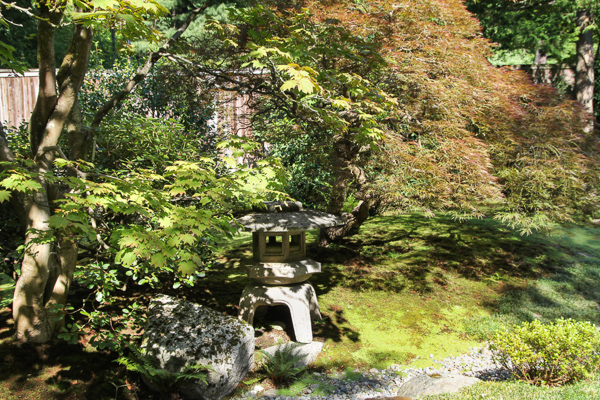
Summer - 2 of 19: On the right you will pass the Yukimi-Doro lantern next to the dry stream bed.
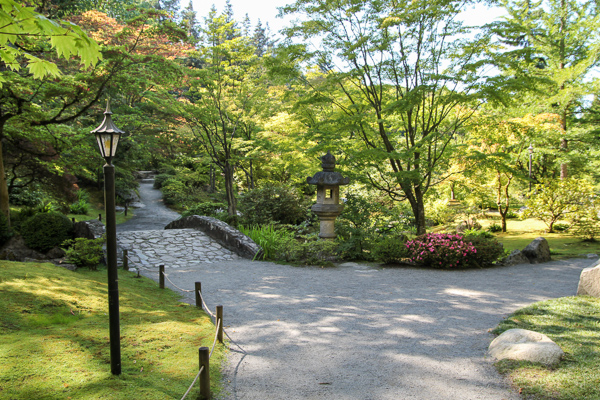
Summer - 3 of 19: The way divides at the Todo-Gata lantern by the arching stone bridge, offering two paths for discovery.
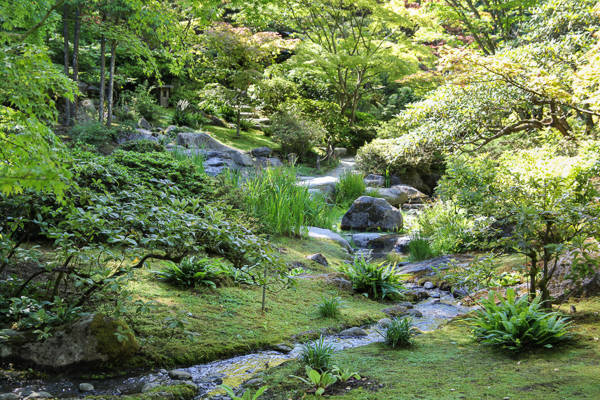
Summer - 4 of 19: From the right hand path you can enjoy the rippling stream, as it burbles quietly along. The lush foliage alternately hiding and revealing varying vistas.
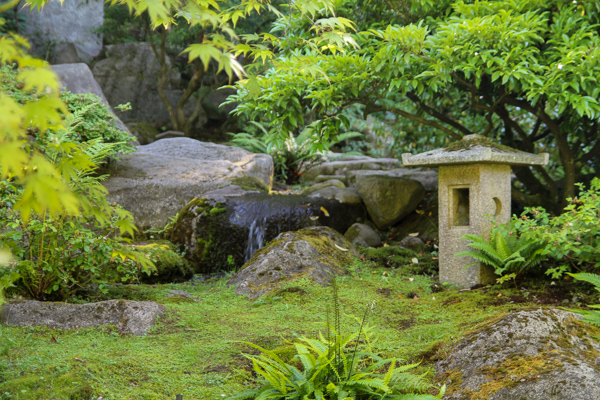
Summer - 5 of 19: Along the left hand path you will discover the Kakuashimoto-Gata box lantern near a gurgling waterfall.
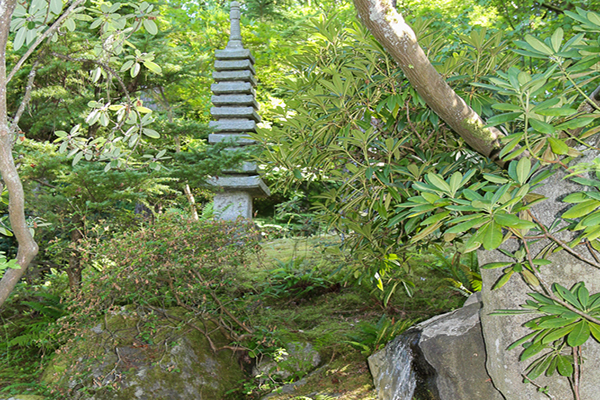
Summer - 6 of 19: If you climb the hill to the upper waterfall, you will find the Korean-type Pagoda lantern with 11 tiers.
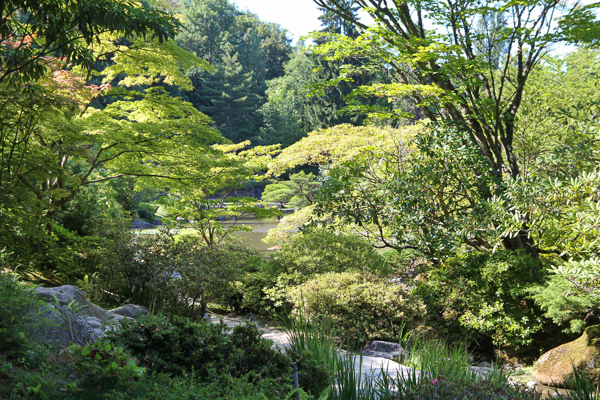
Summer - 7 of 19: Turning around, you will catch a peak at the larger pond in the distance.
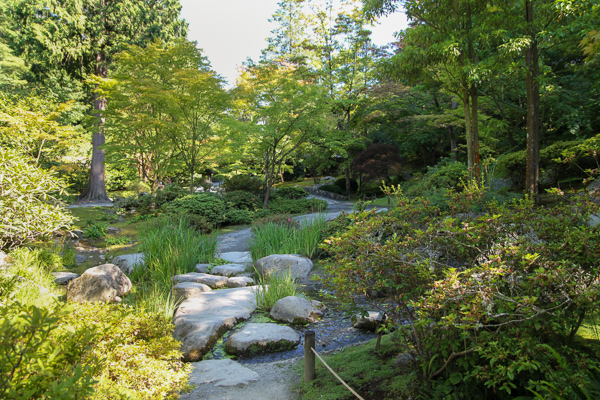
Summer - 8 of 19: Stepping stones provide a crossing at the foot of the waterfall where its waters converge with the upland stream.
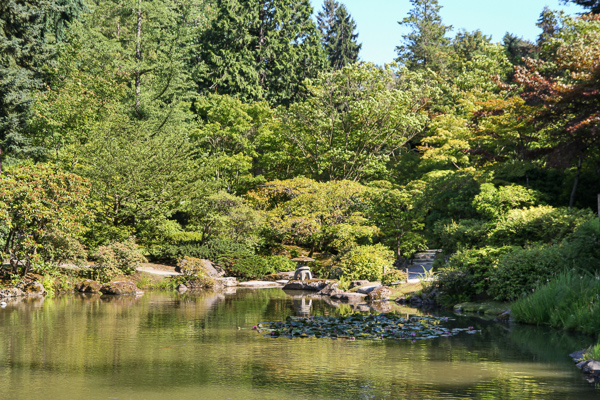
Summer - 9 of 19: From the Moon Viewing Platform, look back at the lush greens surrounding the headwaters of the pond and the Yukimi-Doro lantern perched on a mossy rock.
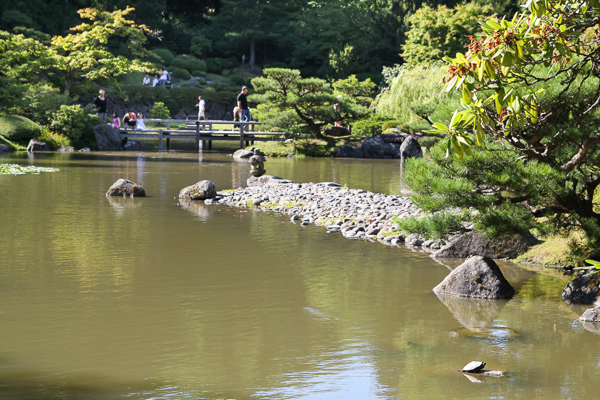
Summer - 10 of 19: Upon emerging at the edge of the pond, you will see the Amanohashidate rocky peninusla with the Misaki-Gata cape lantern marking its tip and the zigzag bridge beyond.

Summer - 11 of 19: From the Dobashi earth bridge, you can clearly see the mystical Turtle Island, complete with sunbathing turtles, across from the weeping willow.
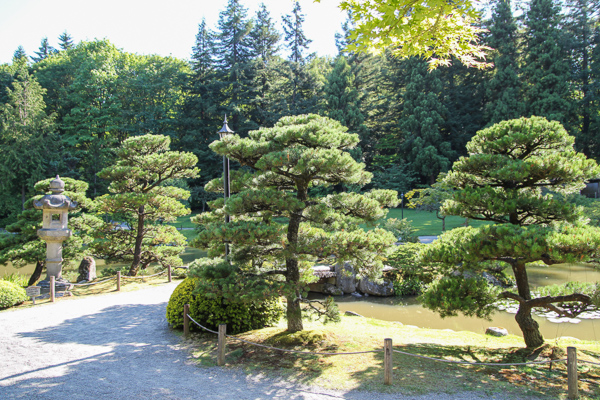
Summer - 12 of 19: The Kasuga- style lantern nestled in a grove of pines marks the entrance to the Dobashi earth bridge.

Summer - 13 of 19: At the far end of the pond, the wisteria vine twists up to its canapy splayed across a bamboo trellis.
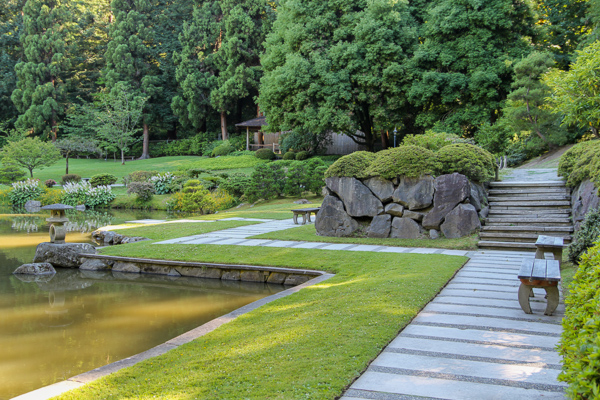
Summer - 14 of 19: The flat lawn and regular paths surrounded by stone walls represent the harbor of the pond.
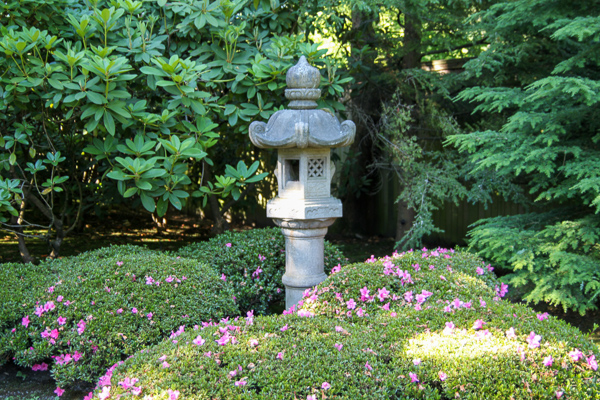
Summer - 15 of 19: Near the wisteria Trellis, this Kasuga-Gata lantern stands 6 feet tall amongst the mounded azaleas.
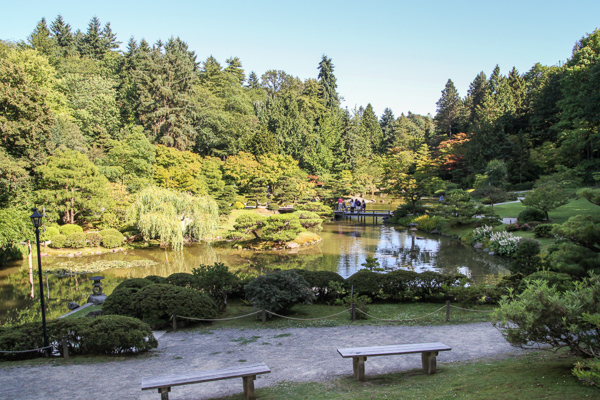
Summer - 16 of 19: Climb the steps behind the harbor for a panoramic view of the pond, the garden and the surrounding borrowed scenery of the Arboretum.

Summer - 17 of 19: Or pause at the foot of the harbor steps to gaze at the water lillies, iris and wisteria trellis.
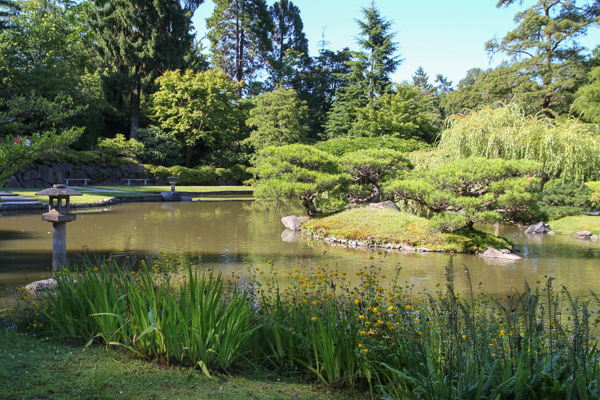
Summer - 18 of 19: From the west side of the pond, you can see the water bound tachi-Yukimi lantern reflecting in the pond, the harbor beyond and another side of Turtle Island.
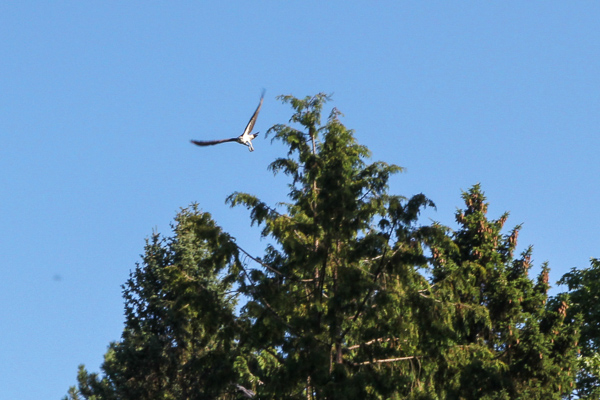
Summer - 19 of 19: On special summer days you may catch a glimpse of an osprey come to fish for supper in the pond.

Fall - 1 of 21: The spectacular colors of fall beckon you into the garden as soon as you step through the entrance gate.
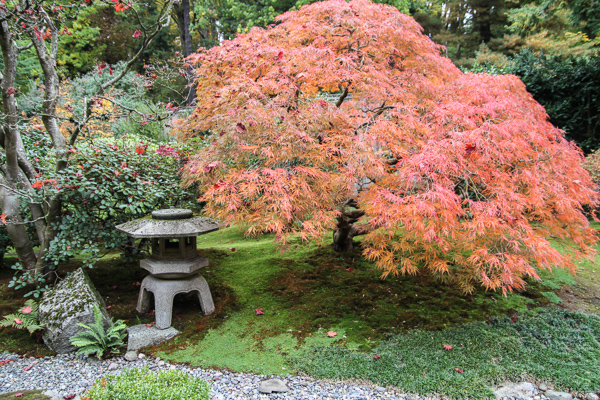
Fall - 2 of 21: The Lace Leaf Maple outshines the Yukimi-Doro snow lantern near the dry stream bed.
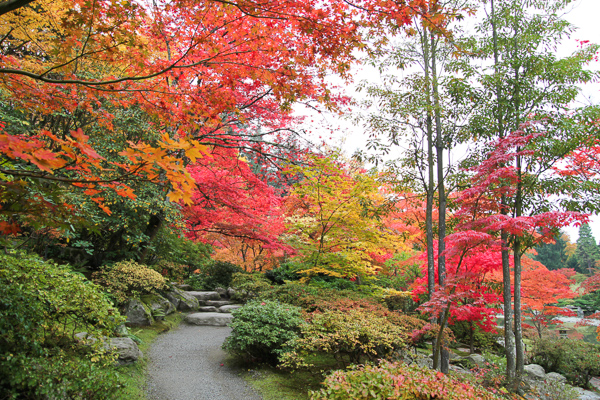
Fall - 3 of 21: The varying shades of the upland hill Maples dazzle the eyes ...
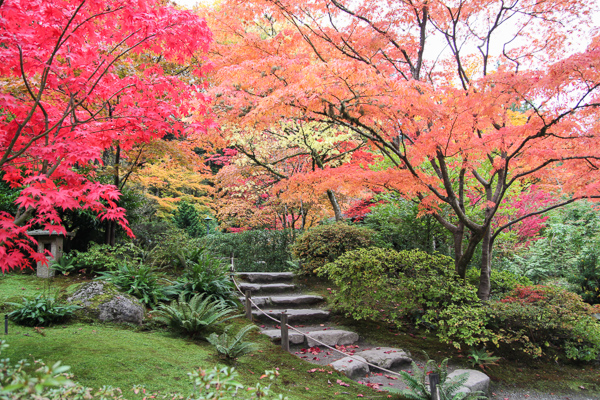
Fall - 4 of 21: ... and invite further investigation.
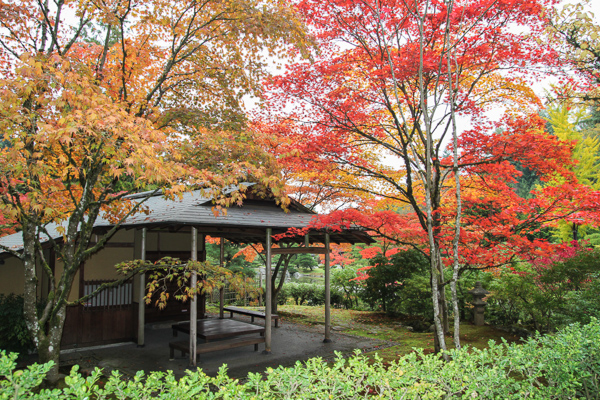
Fall - 5 of 21: They brighten the canopy over the Shoseian Tea House.

Fall - 6 of 21: Looking back toward the stream, the spectacular fall colors contrast with the cool greens of the moss and ferns.

Fall - 7 of 21: The colors of fall highlight the path following beside the stream ...
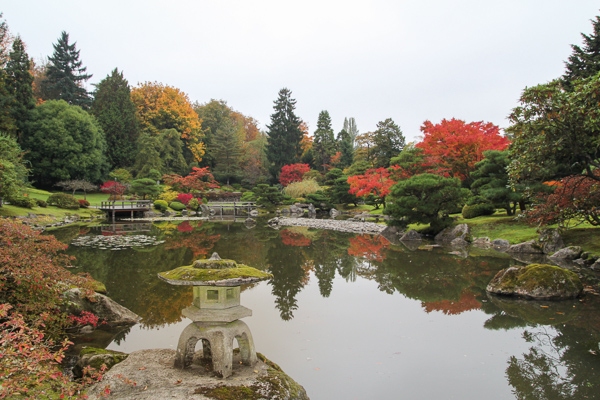
Fall - 8 of 21: ... and accent the distant shores of the pond beyond the second Yukimi-Doro lantern perched on a mossy rock.
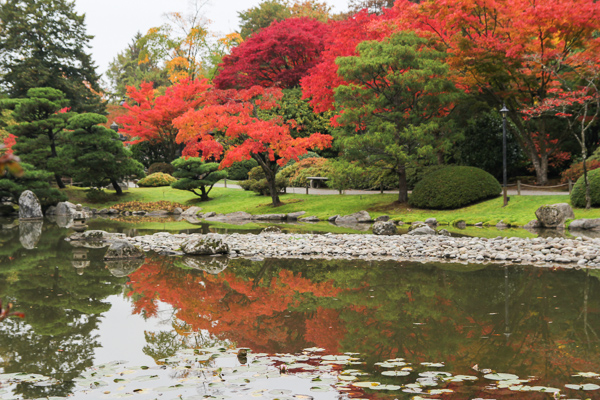
Fall - 9 of 21: Fall colors reflect in the pond in front of the Amanohashidate rocky peninsula tipped with its Misaki-Gata cape lantern.
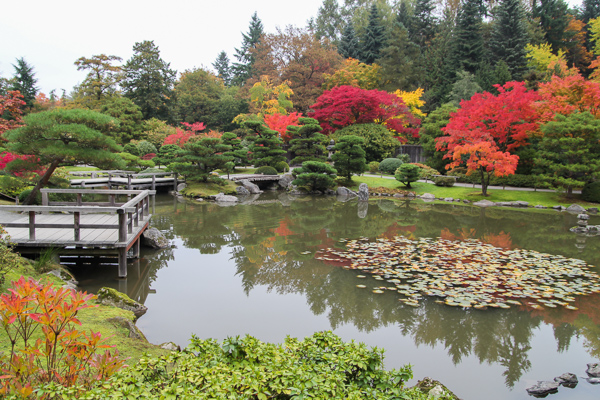
Fall - 10 of 21: The Moon Viewing Platform, the zigzag and dobashi bridges afford additional views of the fall splendor.

Fall - 11 of 21: Even the Koi complement the fall show of color.
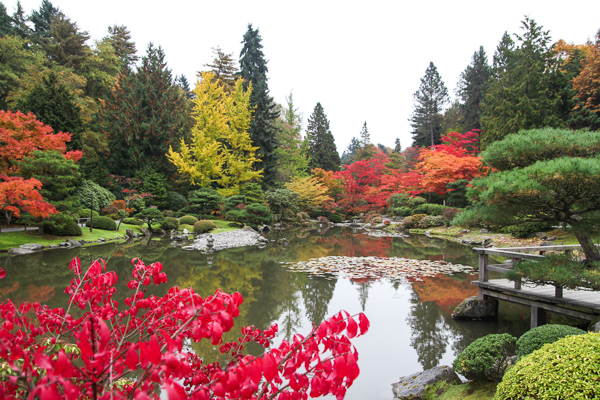
Fall - 12 of 21: The euonymus burning bush frames this view back toward the headwaters of the pond and the tall Gingko tree just beginning to turn yellow.
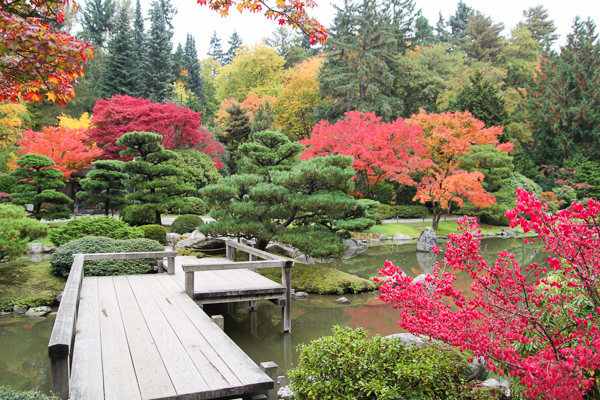
Fall - 13 of 21: The dark green of the pines across the zigzag bridge constrasts with the panorama of color beyond, both inside and outside of the garden walls.
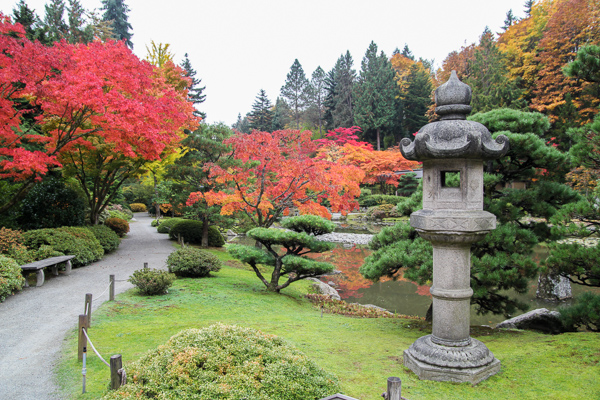
Fall - 14 of 21: The gray of the Kasuga-style lantern and the path accentuate the colors of the trees.
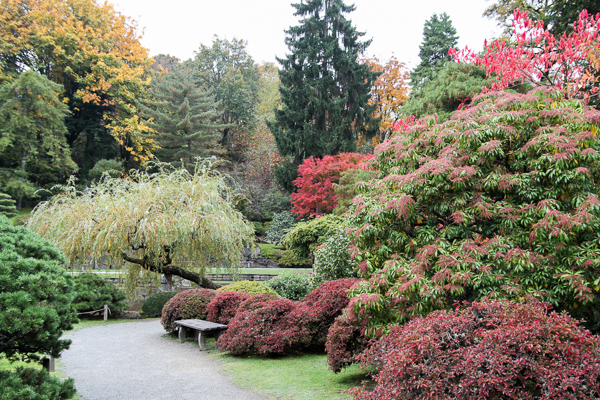
Fall - 15 of 19: Subtle colorations of the azaleas and the pieris adorn the path leading toward the weeping willow ...

Fall - 16 of 21: ... and around the bend toward the wisteria trellis.
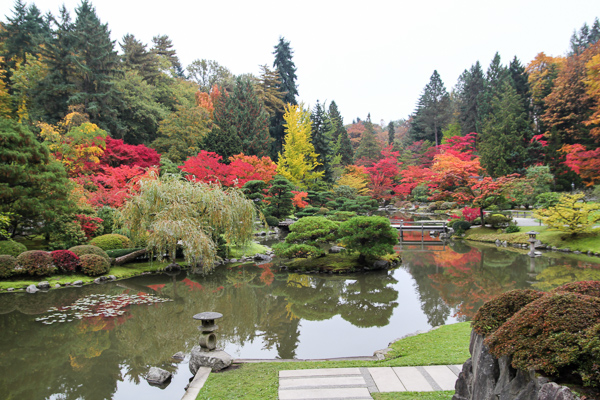
Fall - 17 of 21: From the hill above the harbor, a symphony of color plays across the entire garden before your eyes.

Fall - 18 of 21: From any angle the variety of color ignights your spirit.
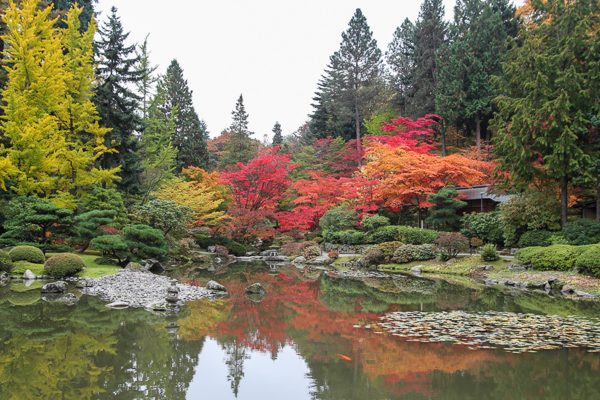
Fall - 19 of 21: Beautiful fall colors reflect in the pond ...
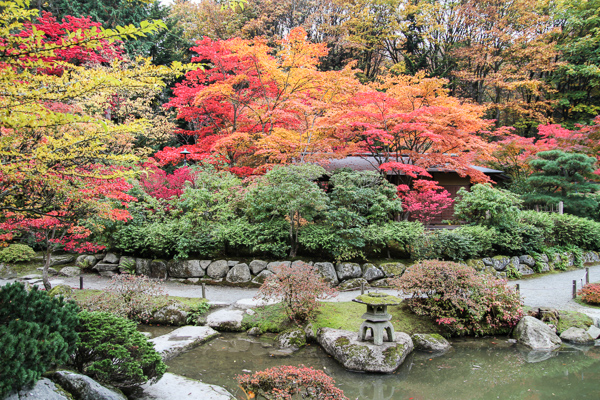
Fall - 20 of 21: ... and protect the Shoseian Tea House under a fanciful arbor.
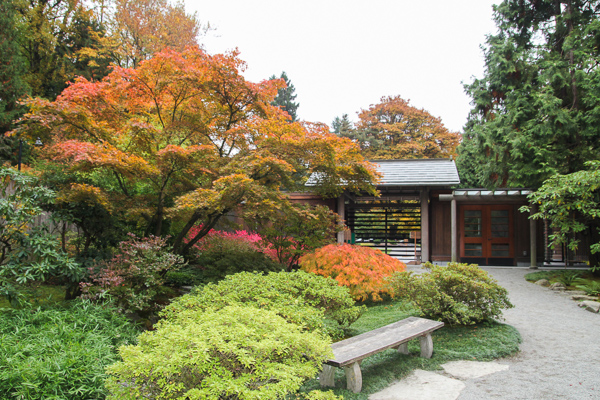
Fall - 21 of 21: It is difficult to bring one's self to leave such beauty!
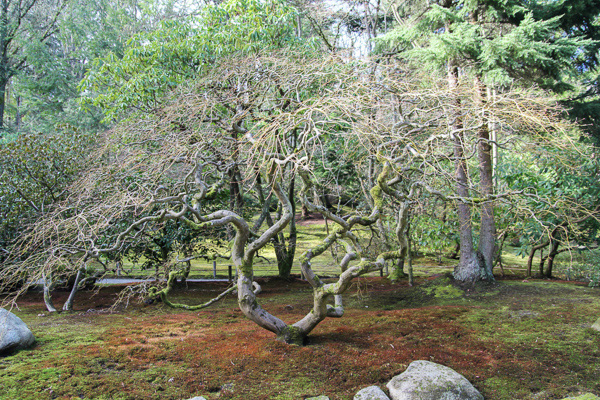
Winter - 1 of 20: In winter, the cold oblique light exposes the leafless bones of the garden like these twisting branches of the Japanese maple near the entrance.
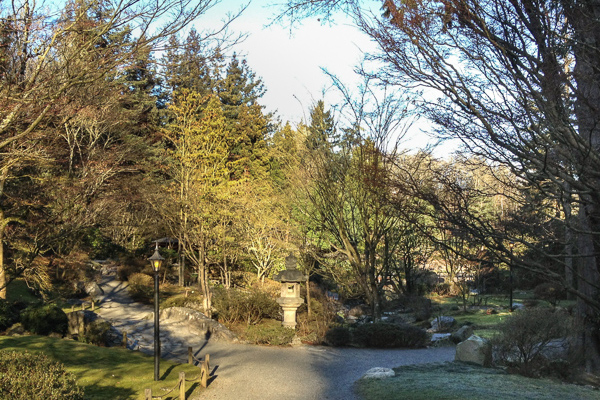
Winter - 2 of 20: In winter, the lack of greenery reveals more details about each choice as the path diverges at the kasuga-style lantern.
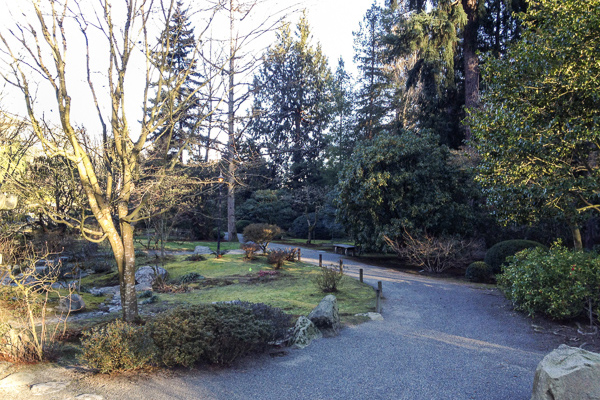
Winter - 3 of 20: In winter, you see the skeletons of the trees and the open spaces seem more expansive.

Winter - 4 of 20: The stones holding the hillsides and guiding the streams become a focuse of strength and beauty.
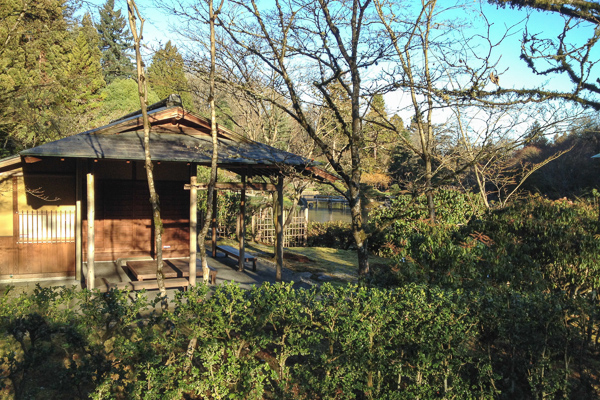
Winter - 5 of 20: The bare branch canopy covering the Shoseian Tea House reveals its intentional setting overlooking the pond.
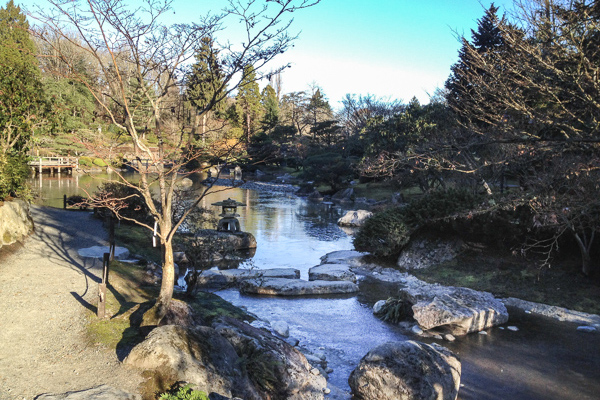
Winter - 6 of 20: If you are lucky, a dusting of snow, frost and ice may cover the stepping stones across the headwaters of the pond.
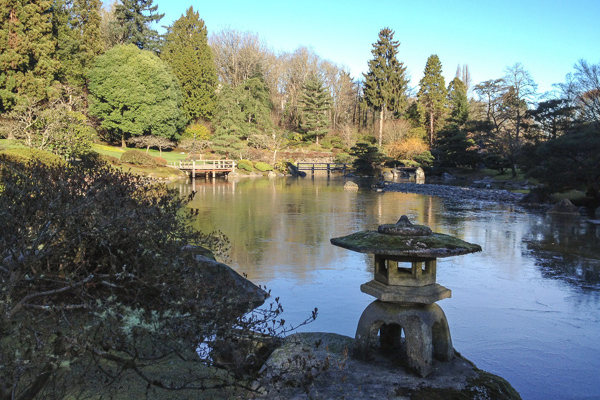
Winter - 7 of 20: Even in the shadows, the Yukimi-Doro snow lantern dominates this view of the pond framed by the empty branches if the surrounding trees.
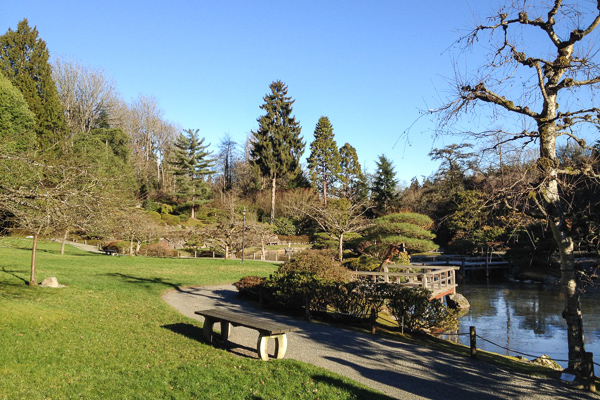
Winter - 8 of 20: The winter sun expands the open feeling of the meadow.
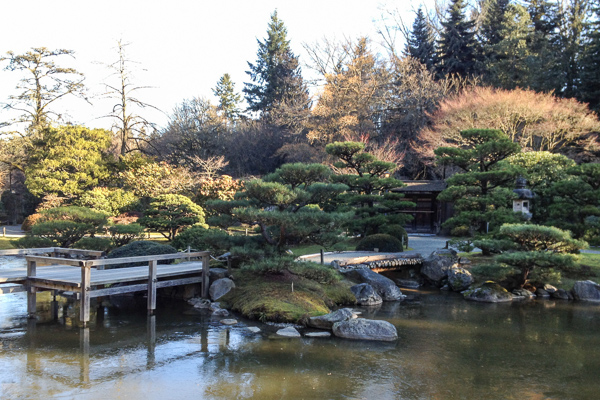
Winter - 9 of 20: The leafless branches behind the pine grove beyond the zigzap bridge lend an ethereal air.
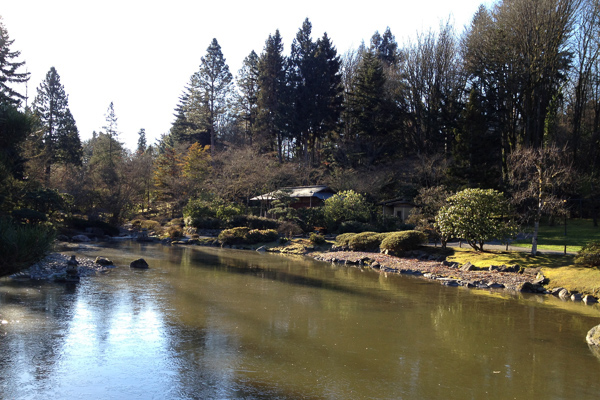
Winter - 10 of 20: The winter vista reveals the Shoseian Tea House at the edge of the pond.
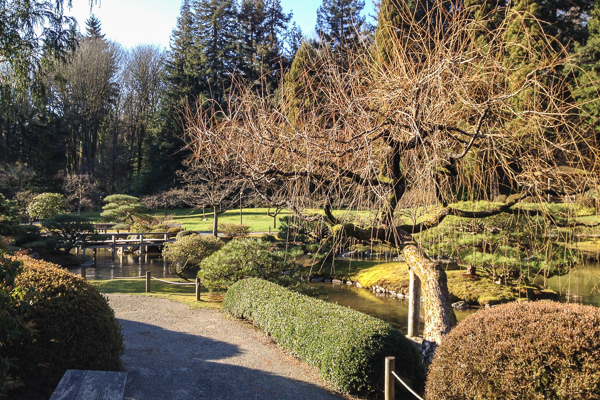
Winter - 11 of 20: Bare branches crown the strong trunk of the leaning weeping willow.

Winter - 12 of 20: The empty vines of the wisteria dominate the bamboo trellis.
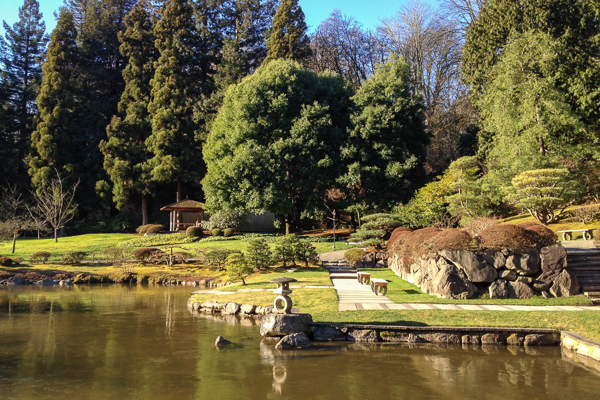
Winter - 13 of 20: The flat lawns and paths of the harbor bask in the late afternoon winter sun that hightlights the Omokage-Gata ring lantern perched on a corner stone.
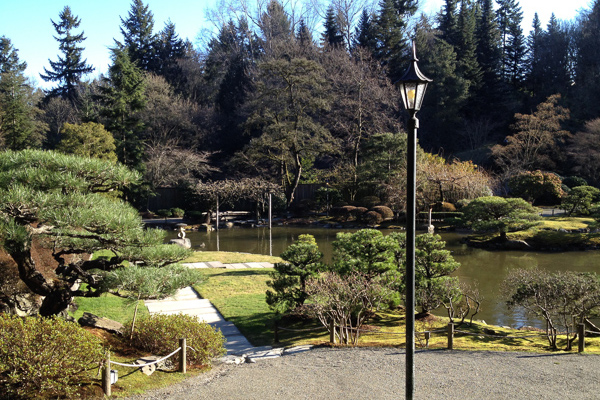
Winter - 14 of 20: Even the borrowed scenery of the Arboretum forest beyond the garden displays the airy spaces of bare branches between the evergreens.
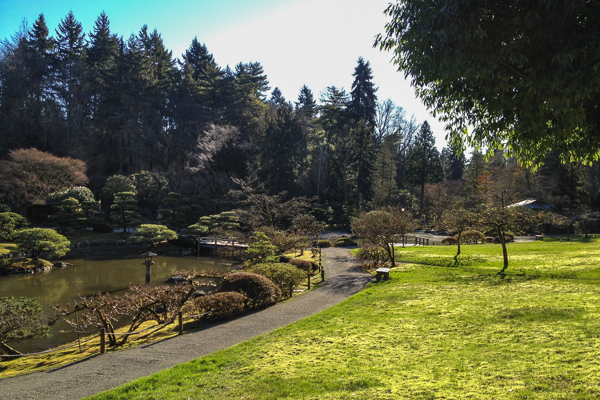
Winter - 15 of 20: The lawn of the orchard holds more focus than the pond because the koi are all sleeping on the mudddy bottom.
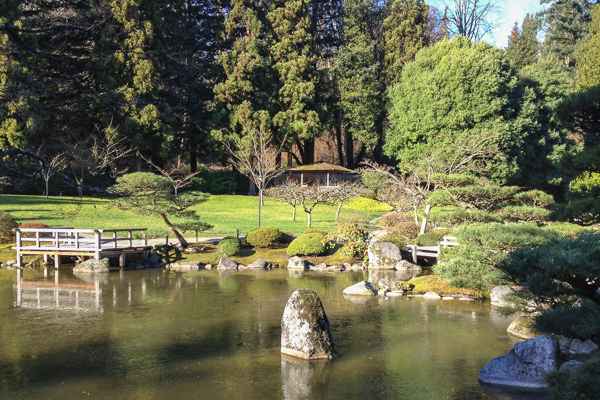
Winter - 16 of 20: The stones in the water and surrounding the banks become a focal point of the ponds.
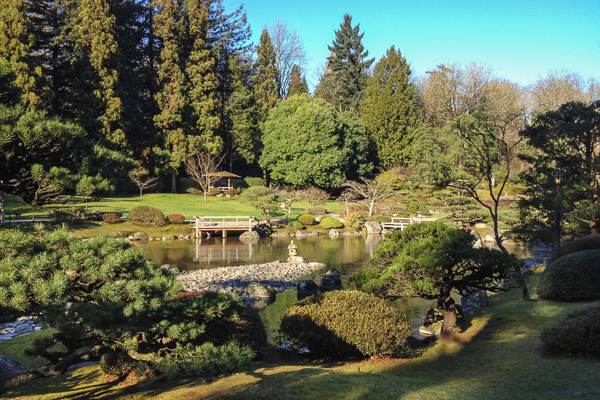
Winter - 17 of 20: The beauty of the garden's structure becomes uniquely evident during winter.
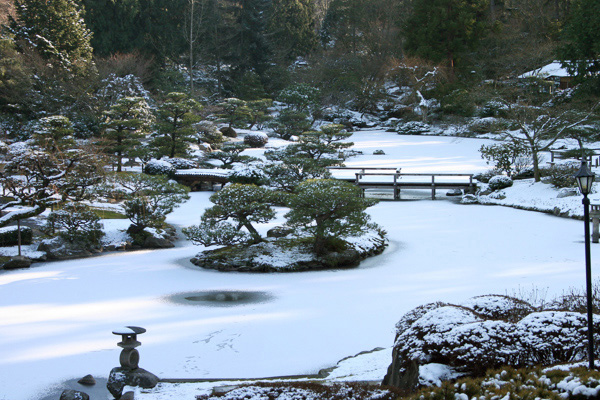
Winter - 18 of 20: On a few magical days in winter, snow may fall in the garden ...
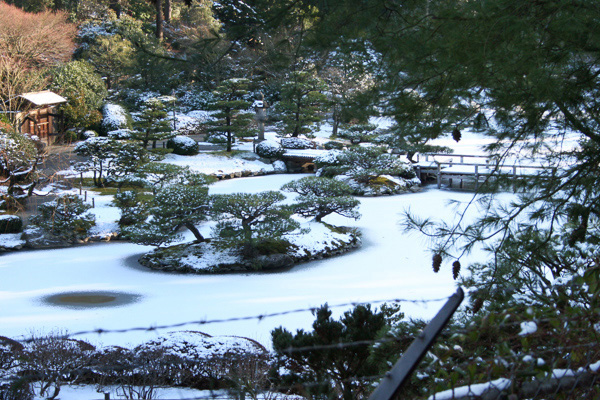
Winter - 18 of 20: ... but because the garden is closed during the winter months, this unique beauty can only be viewed from outside the fence.
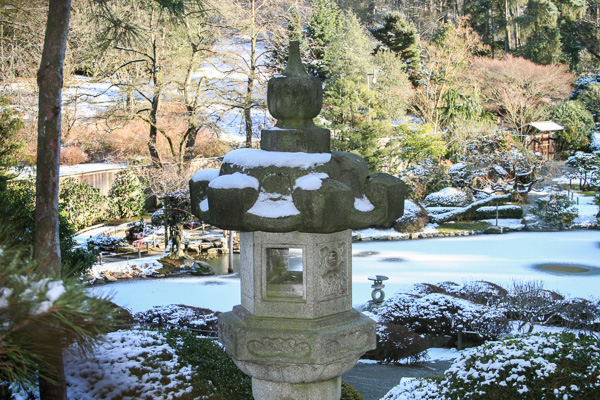
Winter - 19 of 20: Snow in a garden is common occurance in Japan.
Fall
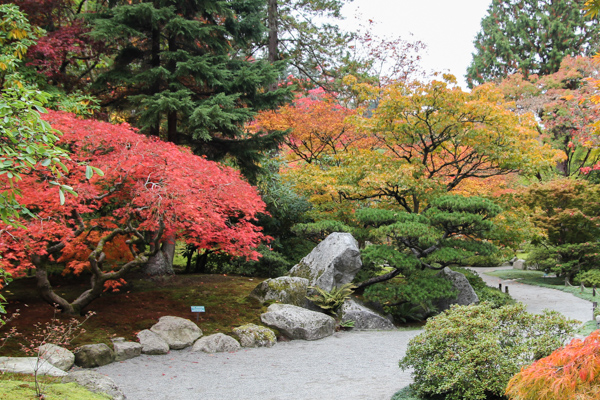
In fall, the trees display their spectacular colors.
Winter

In winter, observe the bones of the garden in the tree branche structure and the placement of the stones.
The Seattle Japanese Garden is currently operated under a partnership between Seattle Parks and Recreaction and the Arboretum Foundation.
^ Back to Top ^

